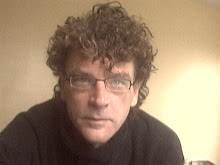I aspire for my students to become critical thinkers in this modern world through study of Earth's philosophies and realize the fact of diversity in the world. I aim to inculcate some advanced computer literacies and find new modes of expressing themselves verbally, visually and aurally through the creation of documentaries on a vast array of subjects. I encourage them to pursue projects that are relevant to their personal and/or professional goals.
I employ a variety of formative assessments in my course in addition to an adamant stance that they acquire new vocabulary and understand themes among the many philosophical traditions on our planet. Among these, one of the most successful is my in-class debate. In my philosophy course, one might see five groups debating whether or not there is an afterlife, whether things are "real" as they appear or "hidden" as they appear, among many other topics. In my religion class, I have seen a Muslim argue vociferously for the Indian Jain tradition as part of enhancing global awareness through pretend assumption of a foreign religion. I engage in small-group in-class reviews of online quiz material and allow for peer-to-peer assessments in this manner as well as through the debates. I always employ powerpoints through both sight and sound to discuss intellectual topics, again for Gardner's reasons, because "a picture is worth a thousand words" and visual images, watching religious dance and aural aids (chanting of mantras, etc.) help learners acquire new and foreign intellectual data far more readily.
I assess students first and foremost by how hard they try. If they meet my attendance requirements and pass through all the components demonstrating competency and if needed, engage in one of many extra credit options, they can expect a B grade at worst. If they fail to complete course requirements, it is my policy to offer an incomplete that they might finalize my course outcomes and demonstrate competencies, though of course at a lower likely C grade at best. The documentary project is worth up to thirty percent of my course grade. This is the one assignment that will live with them for many years after. It is in the end, an intellectual, emotional, visual, aural expression of their values. If they do well on this, factoid grading diminished greatly in my mind as I assess students. Extra credit is always an option to boost poor exam scores.
I continue to improve my teaching. Each semester I have expanded and improved powerpoints to enable my visual teaching. Students often contribute to the betterment of my teaching. For example, to illustrate the Three Seals of Buddhism, a student supplied a visual for my powerpoint that literally showed three seals on a beach. What an incredible mnemonic and I would have never thought of it. I have offered extra credit to students to perfect my instruction of video editing. Without my students' input, the documentaries would be at a relatively lower level than they are without doubt.
Teaching is so vitally important to me. I teach, not for the money, but to do my part to be an agent of change in a diverse and evolving world. There can be no competency in any job any more without knowledge of the other peoples of our planet and the ways in which they think and act. It is a great honor to collaborate now, with the animation instructors to share work and have their students supply animations for my students documentary projects. I am very excited about this new prospect for collaborative teaching. I maintain positive relationships with my students through many new means. Many past students are "friends" on FaceBook, many write comments of their own on their documentaries as I post them on YouTube with their name, with permission. They are excited for the most part, that I have made them published authors and documentary producers. Many have told me they employ the video skills in other classes. I am increasingly excited as the total number of views on my channel on YouTube (opensourcebuddhism) have grown to over 150,000 and I now know that on any given day, 40 Englishman, 20 Indians and 15 Chinese will have watched one of my students' documentaries and learned something new.

No comments:
Post a Comment